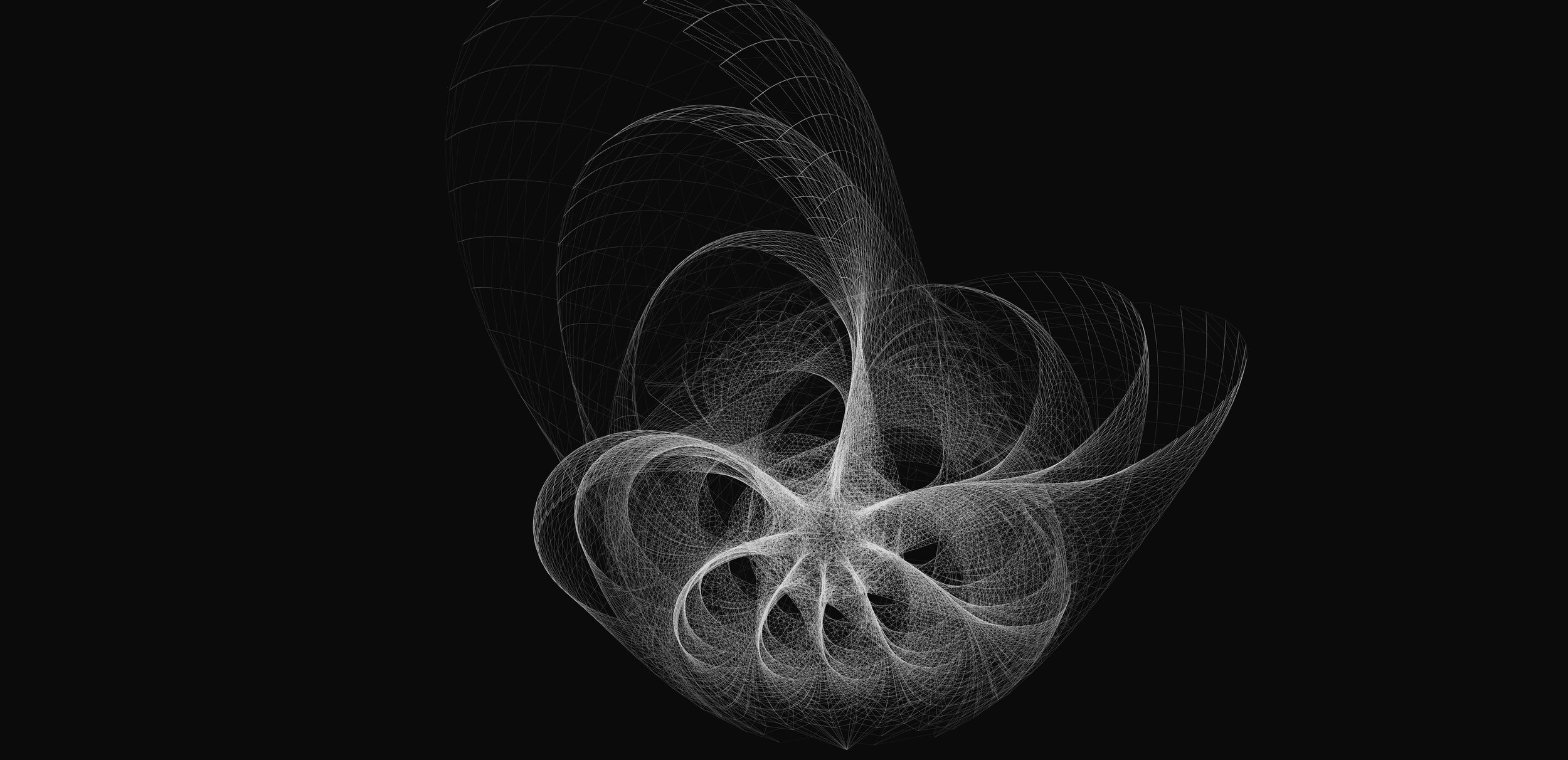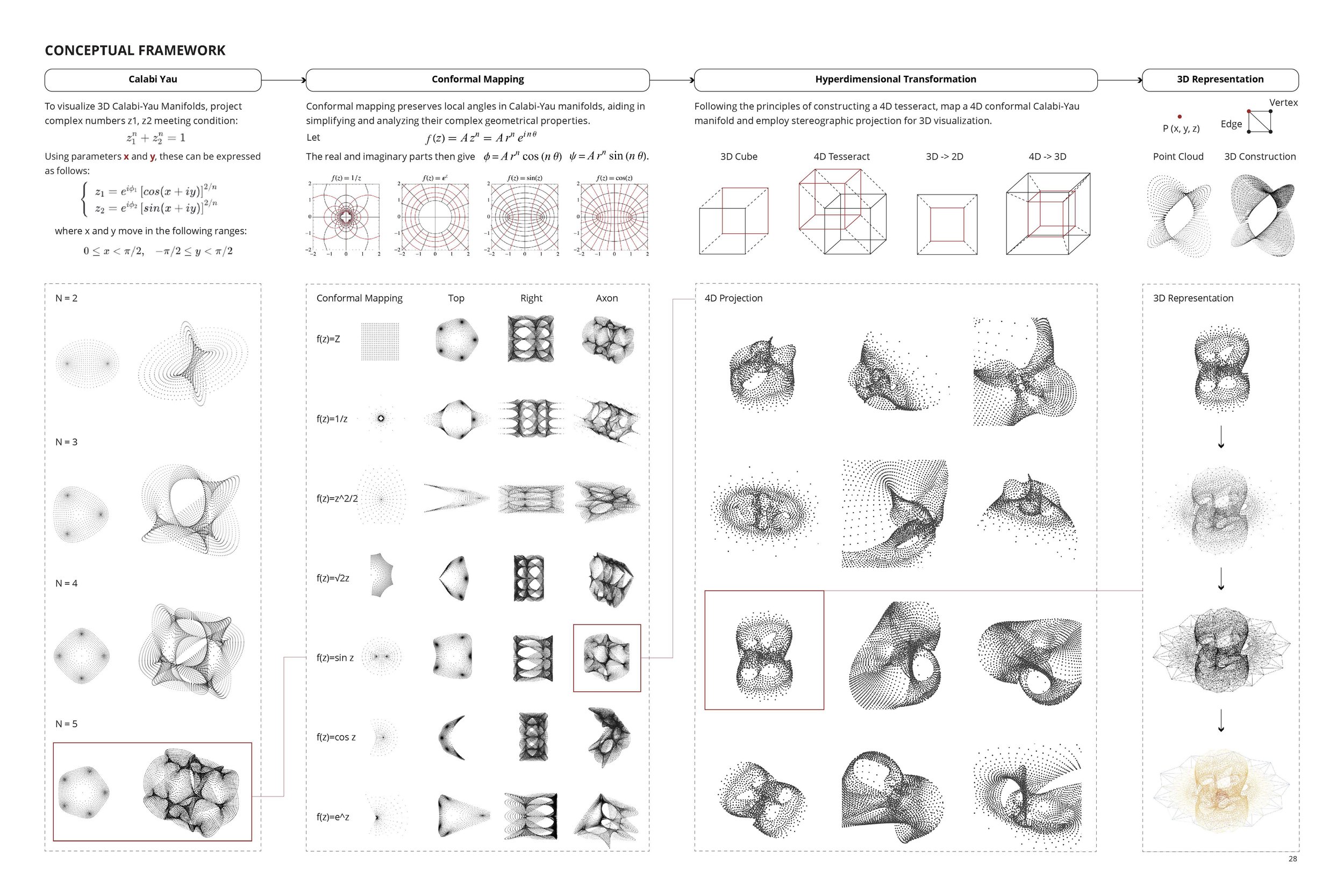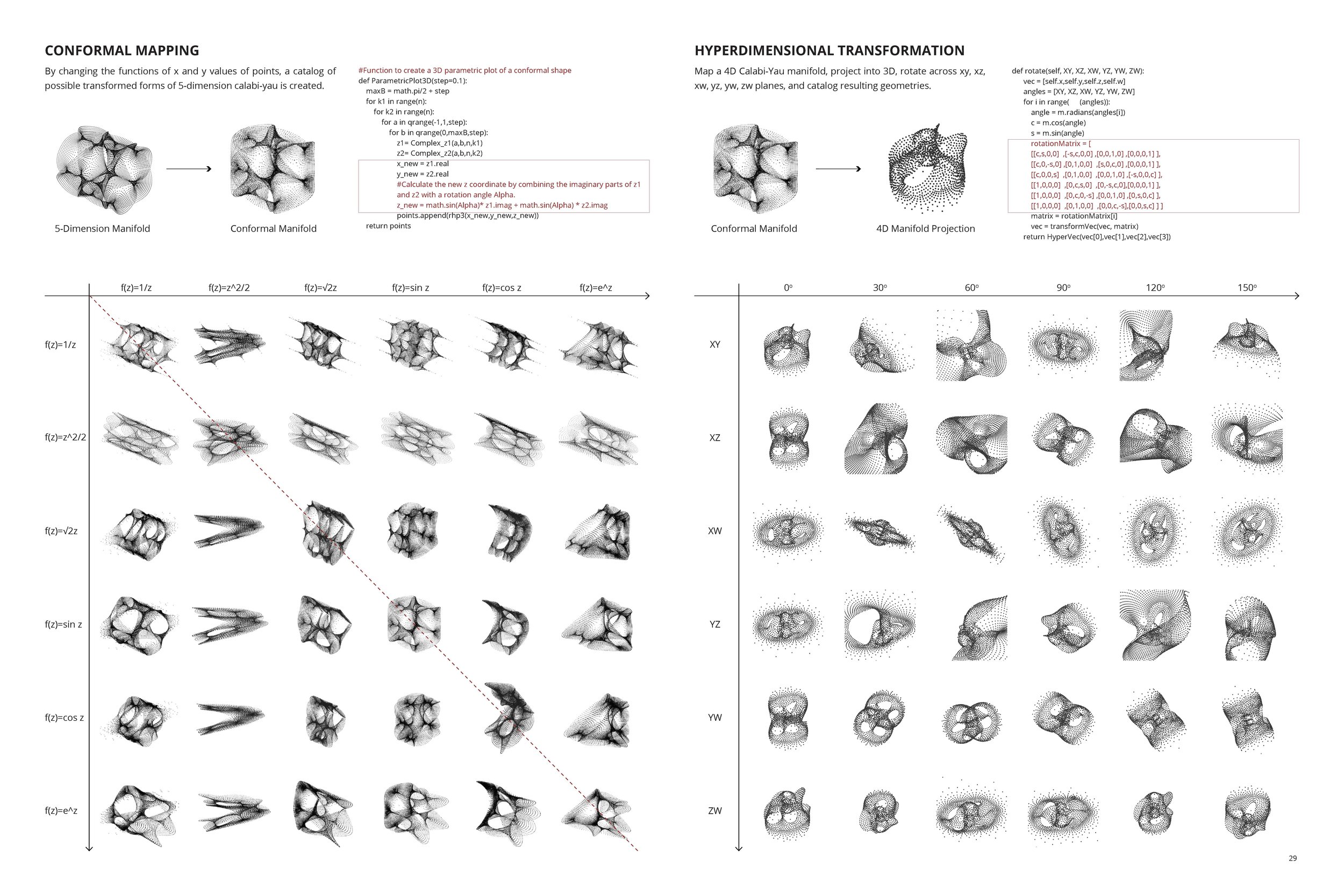
SPATIAL SYMMETRY
Algorithmic Exploration of Calabi-Yau Forms
This project merges the disciplines of architecture, geometry, and computational science to utilize generative systems in transforming Calabi-Yau manifolds, which are pivotal in algebraic geometry and superstring theory, into innovative three-dimensional architectural models. The process begins with conformal mapping to maintain the local angles of Calabi-Yau manifolds, thereby streamlining the complexity of their geometrical attributes. Subsequently, a 4D conformal Calabi-Yau manifold is mapped and subjected to stereographic projection to achieve a 3D visual representation. The final step involves the 3D reconstruction of point clouds into a mesh format.
Emphasizing algorithmic design principles, the project adopts an iterative, experimental approach to leverage computational capabilities for creating diverse spatial structures. This method underscores the importance of spatial dimensions in architectural design and highlights the role of advanced technology in visualizing and interpreting intricate spatial forms. The project aims not just to explore theoretical concepts but also to offer practical applications in architectural design, pushing the boundaries of how we understand and utilize space in the built environment.



